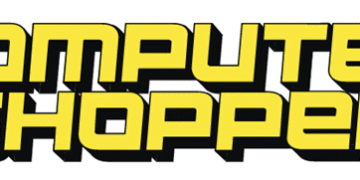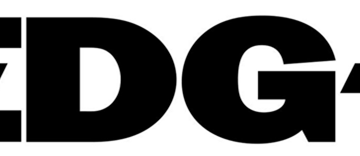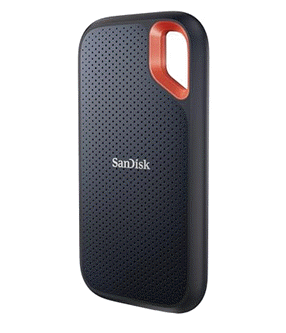2025-08-29 04:45:00
www.linusakesson.net
I invented a new instrument: The Qweremin is a qwerty theremin.
Background
In the summer of 2022 I built a C64-based theremin, described and explained here. The
theremin, of course, is one of the oldest electronic instruments. Its main
drawback—and strength—is that it’s incredibly hard to master. The performer has
ultimate control over volume and pitch, but it takes months of practice before
you can play even a simple scale.
Meanwhile, I’ve also developed a line of instruments featuring qwerty
keyboards, where the keys are laid out as on a Type B chromatic button
accordion. The earliest example is the Sixtyforgan, presented in spring 2021, but
there’s also Qwertuoso, the Commodordion, the Paulimba, and the C=TAR. For these instruments, the
main challenge has been how to incorporate phrasing and other forms of musical
expression; to move beyond the rudimentary note-on, note-off of an organ.
The Qweremin represents the unification of these two worlds. On the one hand
(pun intended) you have ultimate control over volume and expression, and on the
other you can play quick melodies with large jumps, and even chords. It is my
most expressive 8-bit instrument yet.
The volume control
As mentioned in the presentation video at the top of this page, the SID chip
only offers a crude 4-bit master volume control. For greater precision you have
to work with the envelope generators, but those always produce ADSR curves.
What I did in the original theremin project was to hack together a feedback
loop that would continuously monitor the current output level from one of the
envelope generators: When the present level was lower than the desired volume,
I would trigger a new note to enter the attack phase, and when the level was
too high, I would release the note. In this way I could make the envelope
generator hover around any desired volume.
To make this work, I had to set the attack and release rates carefully. Too
fast, and the volume would audibly oscillate back and forth between two levels.
Too slow, and the volume changes would lag far behind the hand movements. I
thought I had found a sweet spot, but it turned out I was being naïve.
In 2023 I ran into Bass Cadet, a
thereminist with a C64 background, at the Revision demo party. She had seen my
video and was enthusiastic about some day being able to get her hands on (or
near, technically speaking) a C64 theremin. It turned out that we were both
planning to attend another party, X, later that year. And since I was going to
bring my C64 anyway, it was a simple matter to throw the spoon and clamp into
my luggage as well.
Now, I always knew that my homemade C64 theremin could never compete with
the precision and responsiveness of a professional-grade instrument, but it was
nevertheless very instructive to get feedback from a real thereminist. I
learned that the biggest problem was the slow response of the volume control
antenna; it wouldn’t react to sudden changes, which made it impossible to
control the phrasing or “shape” of individual notes.
Falling back on just using the master volume register made the instrument
playable, but as expected you could hear the distinct levels. This is
especially problematic towards the low end of the range: For instance, going
from level 1 to level 2 doubles the amplitude of the sound, and
that can be quite jarring in the middle of a pianissimo part.
So once I had the idea to make a Qweremin, I knew I had to pay more
attention to the snappiness of the volume control. And since I was already
relying on external components (the 555 timers), it wasn’t a big deal to
add an external DAC. Then I ran into the noise issue described in the
presentation video, and added a second DAC chip to compensate for it. I’m aware
that there are dual-channel DAC chips on the market; I used two separate chips
because that’s what I happened to have at home.
The C64 is still very much involved in the operation of the volume antenna.
It needs to decode the pulses from the 555, convert that to a desired
volume level, and pass it to the DAC chips over the user port.
A touch of celebrity
By sheer coincidence, in the same year that I brought my C64 theremin to X,
the organizers had invited legendary game music composer Rob Hubbard as a guest
of honour. I was waiting in the long line of people who wanted to exchange a
few words with him when Mahoney, who happened to be standing nearby, had the
excellent idea that I should ask Rob to sign the clamp of my C64
theremin—something he gladly did!
Posted Friday 29-Aug-2025 06:46
Discuss this page
There are no comments here yet.
Keep your files stored safely and securely with the SanDisk 2TB Extreme Portable SSD. With over 69,505 ratings and an impressive 4.6 out of 5 stars, this product has been purchased over 8K+ times in the past month. At only $129.99, this Amazon’s Choice product is a must-have for secure file storage.
Help keep private content private with the included password protection featuring 256-bit AES hardware encryption. Order now for just $129.99 on Amazon!
Help Power Techcratic’s Future – Scan To Support
If Techcratic’s content and insights have helped you, consider giving back by supporting the platform with crypto. Every contribution makes a difference, whether it’s for high-quality content, server maintenance, or future updates. Techcratic is constantly evolving, and your support helps drive that progress.
As a solo operator who wears all the hats, creating content, managing the tech, and running the site, your support allows me to stay focused on delivering valuable resources. Your support keeps everything running smoothly and enables me to continue creating the content you love. I’m deeply grateful for your support, it truly means the world to me! Thank you!
|
BITCOIN
bc1qlszw7elx2qahjwvaryh0tkgg8y68enw30gpvge Scan the QR code with your crypto wallet app |
|
DOGECOIN
D64GwvvYQxFXYyan3oQCrmWfidf6T3JpBA Scan the QR code with your crypto wallet app |
|
ETHEREUM
0xe9BC980DF3d985730dA827996B43E4A62CCBAA7a Scan the QR code with your crypto wallet app |
Please read the Privacy and Security Disclaimer on how Techcratic handles your support.
Disclaimer: As an Amazon Associate, Techcratic may earn from qualifying purchases.






















































![[5-Yrs Free Data Recovery] GIGASTONE 256GB SD Card, 4K Camera Pro, A1 V30 SDXC Memory…](https://techcratic.com/wp-content/uploads/2025/09/51F2IcqgHrL._AC_SL1000_-360x180.jpg)



















































